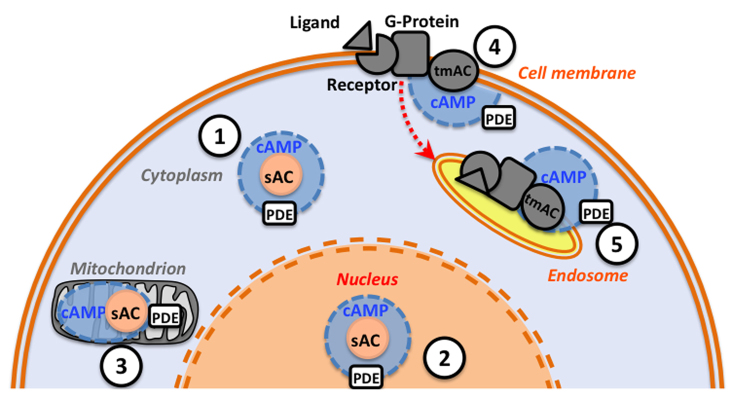Fig. 1.
Intracellular cAMP-signaling microdomains. cAMP production may occur in discrete intracellular compartments such as (1) focal points throughout the cytoplasm, (2) the nucleus, (3) mitochondria, (4) the cell membrane vicinity and (5) internalized endosomes. Additional regulation might involve the movement of soluble adenylyl cyclase (sAC) between compartments (not shown). Each microdomain contains a source of cAMP [sAC or transmembrane adenylyl cyclase (tmAC)]; phosphodiesterases (PDEs) that degrade cAMP, thus acting as barriers for cAMP diffusion; and cAMP targets such as protein kinase A (PKA) or exchange protein activated by cAMP (EPAC) (not depicted). Production of cAMP by sAC is stimulated by increased [HCO3−] (and in some cases Ca2+, see ‘Discovery of mammalian sAC’ and Fig. 2 for details). Production of cAMP by tmAC occurs in response to various extracellular ligands and it requires modulation by G-protein-coupled receptors and G-protein.

